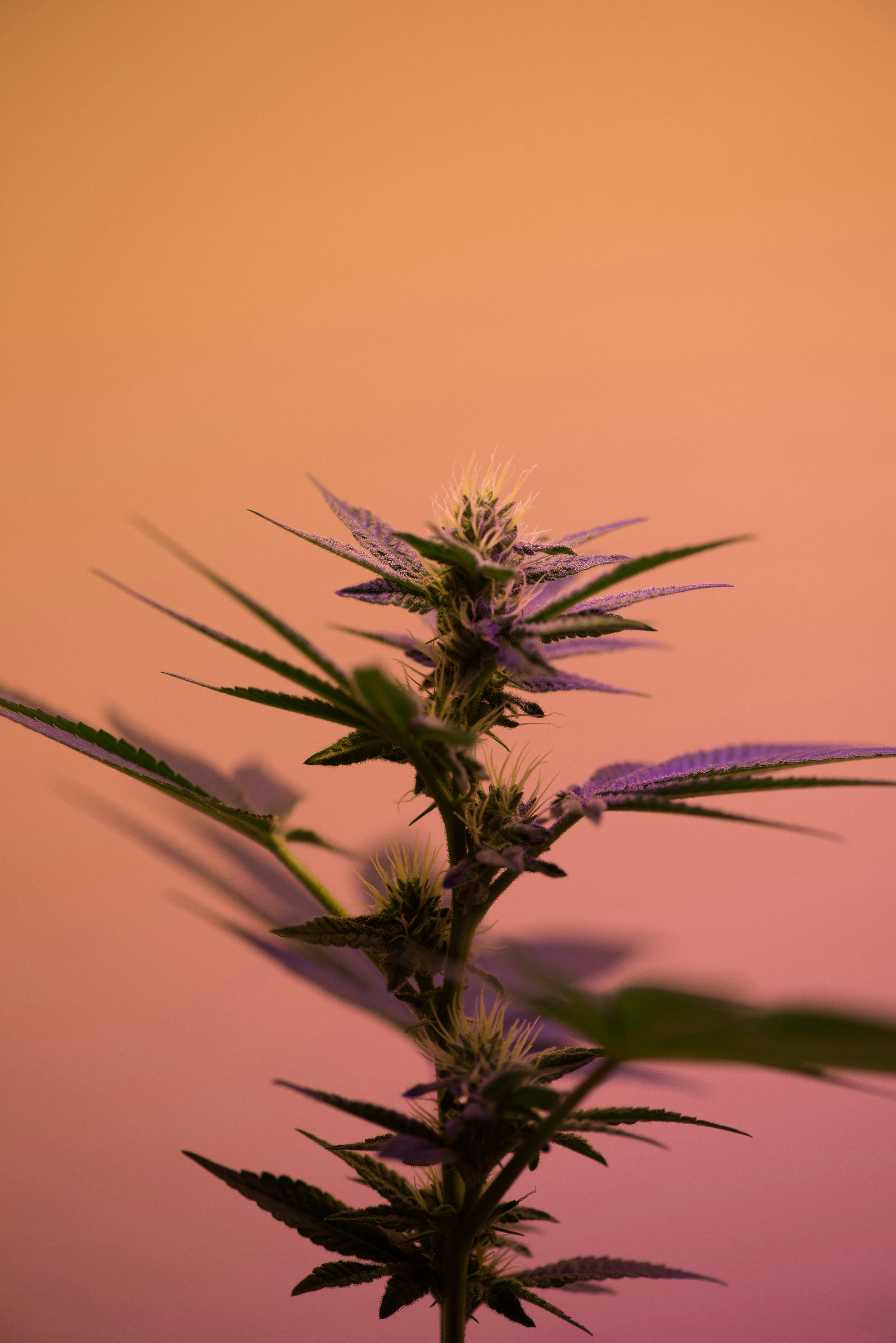Cannabis and yoga have been interconnected for thousands of years, for both religious and ceremonial purposes, and it is believed that this deep connection is why cannabis was incorporated into yoga practice. In either case, yoga and cannabis seem at home with each other.
We spoke with Hannah Mason, Founder of the Los Angeles-based Cannabis Yoga studio, Lit Yoga. Founded in 2017, Lit Yoga was the first of its kind, based in an intimate private space in Venice Beach, California. Hannah’s vision was simple: to open a studio that provided an educational and welcoming space for people to experience a combination of yoga and cannabis, whether for the first time or the hundredth time.
As described by Hannah, the history behind cannabis and yoga practice is ancient and intertwined. “Entheogenic plants have been used in combination with ritual, movement, and prayer for a very long time. Humans all share the quest to know themselves, the world around them, and how they fit into the whole. The physical world expresses the individualism that separates us, and the spiritual world expresses the connections that unify us. Ancient yogis induced altered states of consciousness through meditation, asana, pranayama, and cannabis, along with other herbs which were at times included in this way of life.”
Before the creation of Lit Yoga, Hannah’s relationship with cannabis started like many others, in college while studying dance. “With a physically demanding schedule, cannabis truly became a medicine as I dosed myself before stretching and unwinding at the end of the day. It also provided the much-needed inspiration for music and choreography.” After Hannah graduated and moved to Los Angeles, the legal cannabis landscape was rapidly changing, but the stigma attached to cannabis was still very apparent. “In 2017, before California became recreationally legal, I realised that all this time I had been hiding my cannabis consumption within the dance communities, yoga communities, and health/wellness realms. Since it had been deemed an illicit drug for so long, the stigma was real.” As legalisation propelled forward and the industry began to boom, Hannah met others who had a deep relationship with the cannabis plant but kept it separate from their professional, wellness, and spiritual image. “It became crystal clear that there was a disconnect between those consuming cannabis and those being open about it. The impetus to create Lit Yoga was driven by two dynamic forces: one, the healing powers of the plant that I experienced in my own body, mind, and spirit, and two, the desire to eliminate the stigma and change the conversation to health, wellness, and healing.”
While integrating cannabis into your next yoga session may seem like a scary thought at first for beginners or even seasoned yogis, its benefits for the mind and body may surprise you. As Hannah explains: “When we include cannabis before the yoga asanas, breathwork, or meditation practices, it induces an altered state of consciousness.
In this altered state, the effects can include heightened body awareness, reduced inflammation and physical pain, deeper connection to emotions stored in the body as tension, new perspectives in the mind, connection to community, enhanced awareness of breath, introspection, reflection, and a sense of playfulness and laughter.”
Lit Yoga offers both cannabidiol (CBD) and tetrahydrocannabinol (THC) products in their studio practices, each providing their own unique experience. As we know, CBD doesn’t produce a euphoric effect like its sibling THC. However, using both versions separately and in combination during yoga practice can be beneficial. “CBD can be great for practicing in the morning when you don’t want the potency of THC, or if using THC makes you feel anxious or paranoid. CBD is a great alternative that still provides many health benefits that the cannabis plant has to offer. A THC yoga experience can sometimes feel like a therapy session, where you tune in (whether it’s comfortable or not) to the truths inside you. While CBD can still provide a space for introspection, it is a milder experience which is still highly beneficial,” Hannah explains.
In Australia the consumption of cannabis is only legal in the privacy of your own home if you are an approved legal patient. If you’re interested but unsure about where to start, we asked Hannah for some much-needed guidance to help you navigate the landscape of bringing cannabis into yoga.
For the Newbies
“One of the best ways to integrate cannabis in your practice at home is to create a ritual or ceremony around your cannabis consumption. Create the container or your space where you will practice. Pick out the strain, tincture, or product you will consume. Start by sitting in a comfortable position and drop into your breath or a meditative state before you consume. Bring intention to what you are consuming and why; perhaps write a journal about your intentions before you consume. Express gratitude to the plant and to all those who have worked so hard for you to have access to this magical plant. Consume before you begin to practice. You can also take a break during your practice to consume more if you feel it’s needed. Stay mindful of your dose and let the herb guide you deeper into your experience.”
Strain Recommendation
“It is challenging to give strain recommendations as all people respond differently to different compounds and terpenes; we all have a different Endocannabinoid System! However, if you are combining cannabis with a more active practice, I suggest finding strains that are higher in terpenes like Pinene (pine smell, earthy and bright) and Limonene (citrus notes, alerting and activating) as those will provide a more uplifting and energizing experience. For a more mellow and restorative practice, I suggest strains with terpenes like Linalool (found in Lavender) or Myrcene (found in hops) as they have more sedative and relaxing properties.”
Hannah also suggests “finding strains with a more balanced ratio of THC and CBD (1:1 or 1:2), as these strains keep you very present for your practice and the lower THC percentages can eliminate the concern for anxiety or paranoia. In general, it takes some exploring and experimenting to find the best strains that are suitable for you. Your sense of smell is a big indicator of how the strain will interact with your system, so if you are not sure, always go with what smells the most delicious to you.”
Dosing
“In terms of dosing, start small and grow from there. When combining with a yoga practice, it is ideal to find the dose that gives you the effect without overloading your system. Over-consumption can easily happen, so start with 1-5 mg of an edible or a few hits of a joint or piece. Wait a bit and see how you feel. You can always consume more, but you can’t backtrack!”
While Lit Yoga may not be available in Australia, there is no excuse for our fellow Australians to not roll out a mat and a joint and practice from the comfort of their own home. Otherwise, you can choose to medicate prior to your next session and stroll on down to your local studio to maximize your experience.
Namaste, future cannabis yogis.





